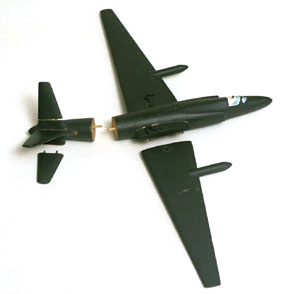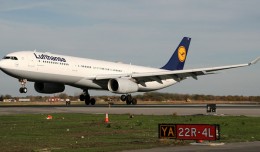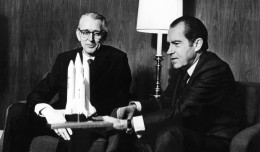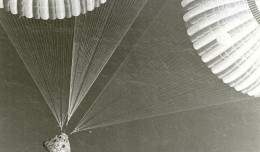2009: The communications satellites Iridium 33 and Kosmos-2251 collide in orbit 490 miles above Siberia at a speed of 26,170 mph.

Model depicting breakup of Gary Powers’ U-2 aircraft when it crashed.
1995: During a month-long border dispute, two Peruvian Sukhoi Su-22Ms are shot down by a pair of Ecuadorian Mirage F1JAs, and a Peruvian Cessna A-37B is shot down by an Ecuadorian Kfir C.2.
1995: The first prototype of Antonov’s new An-70 large prop-powered transporter is destroyed after a mid-air collision with an An-72 chase plane. All seven aboard are killed in the crash.
1993: McDonnell Douglas delivers its 10,000th aircraft, a US Navy F/A-18 Hornet.
1964: The Royal Australian Navy aircraft carrier HMAS Melbourne (R21) collides with the destroyer HMAS Voyager (D04) during exercises off of Jervis Bay, Australia, slicing the destroyer in two and killing 82 of Voyager‘s sailors.
1962: Captured CIA U-2 spy plane pilot Gary Powers is released by Soviet authorities in a spy swap with the U.S. in Berlin.
1952: Maj George A. Davis Jr is killed while attacking a group of 12 Mikoyan-Gurevich MiG-15s that were about to attack other US aircraft over Korea for which he is posthumously awarded the Medal of Honor.
1941: Britain uses paratroopers for the first time in an attack on Tragino, Italy.







